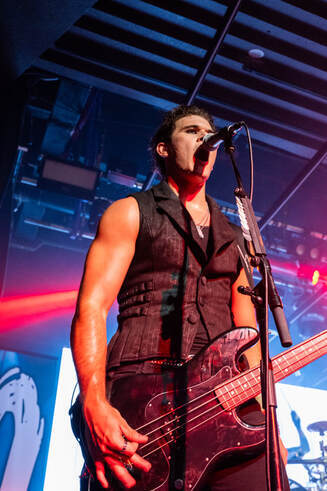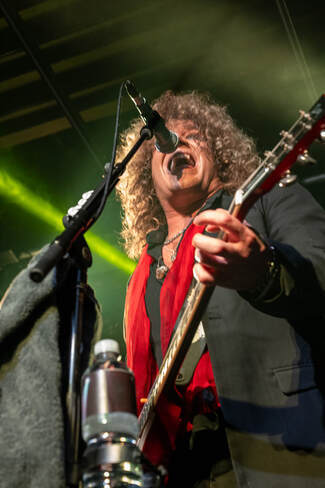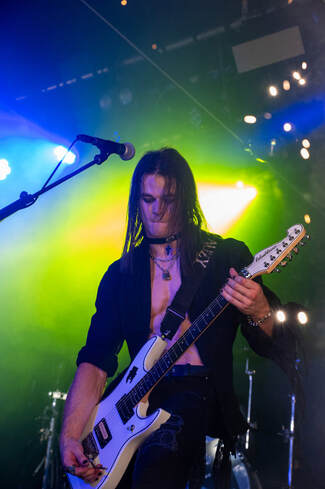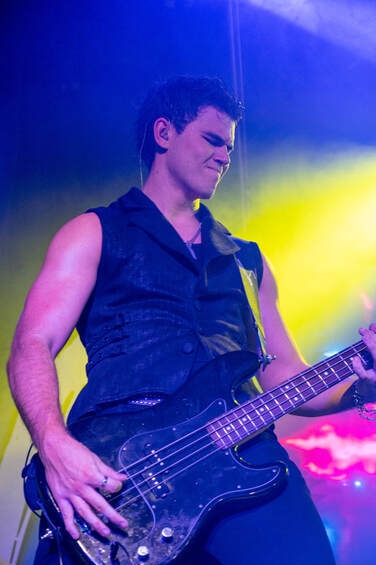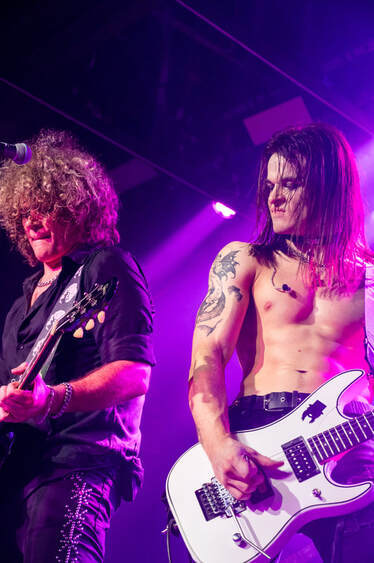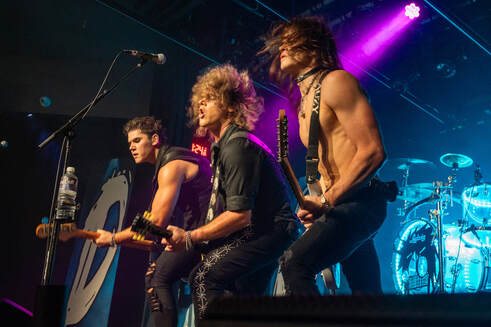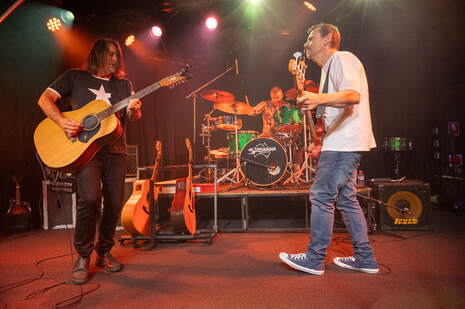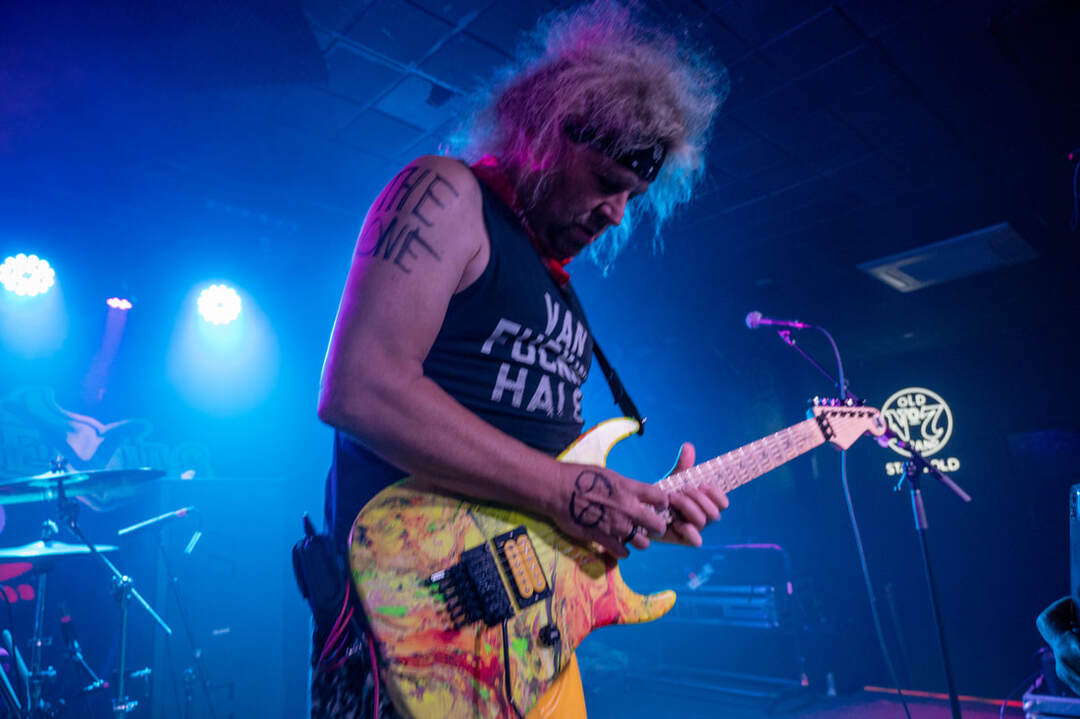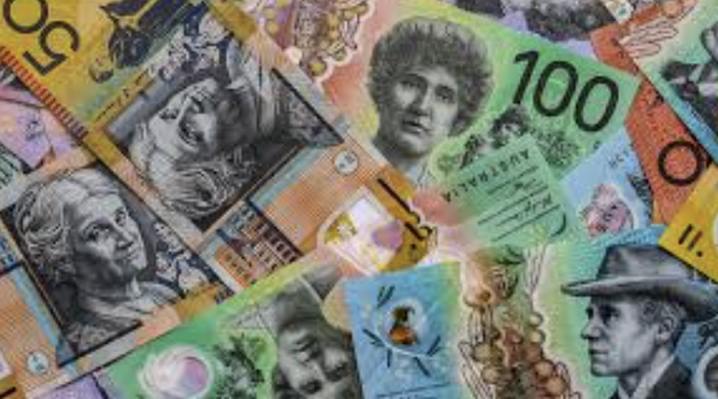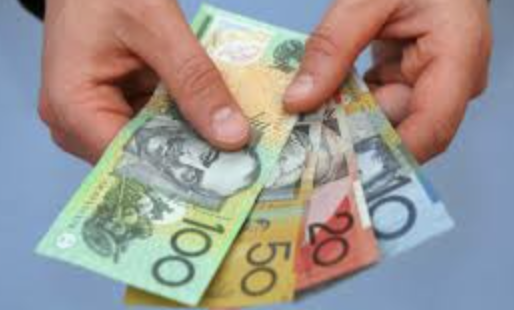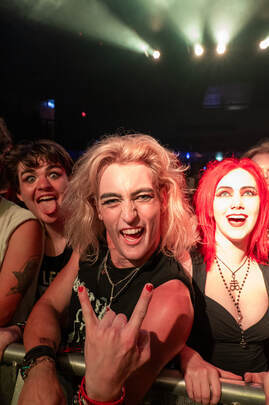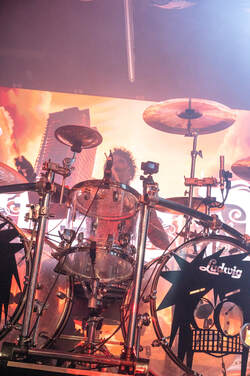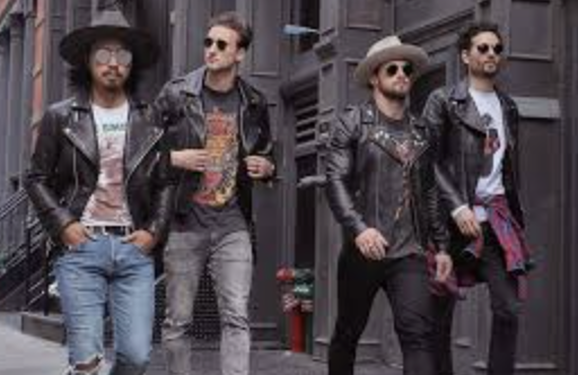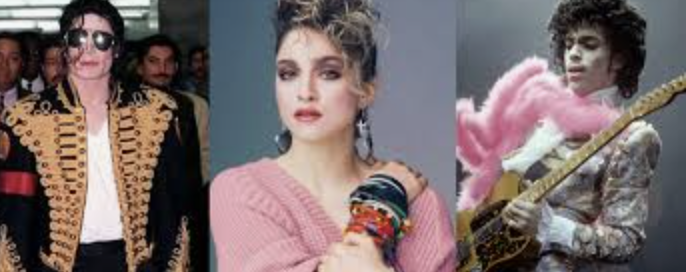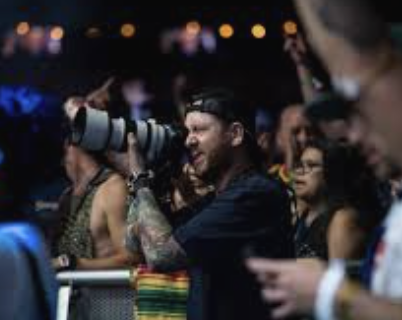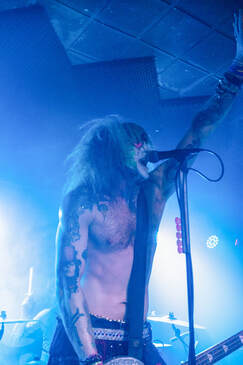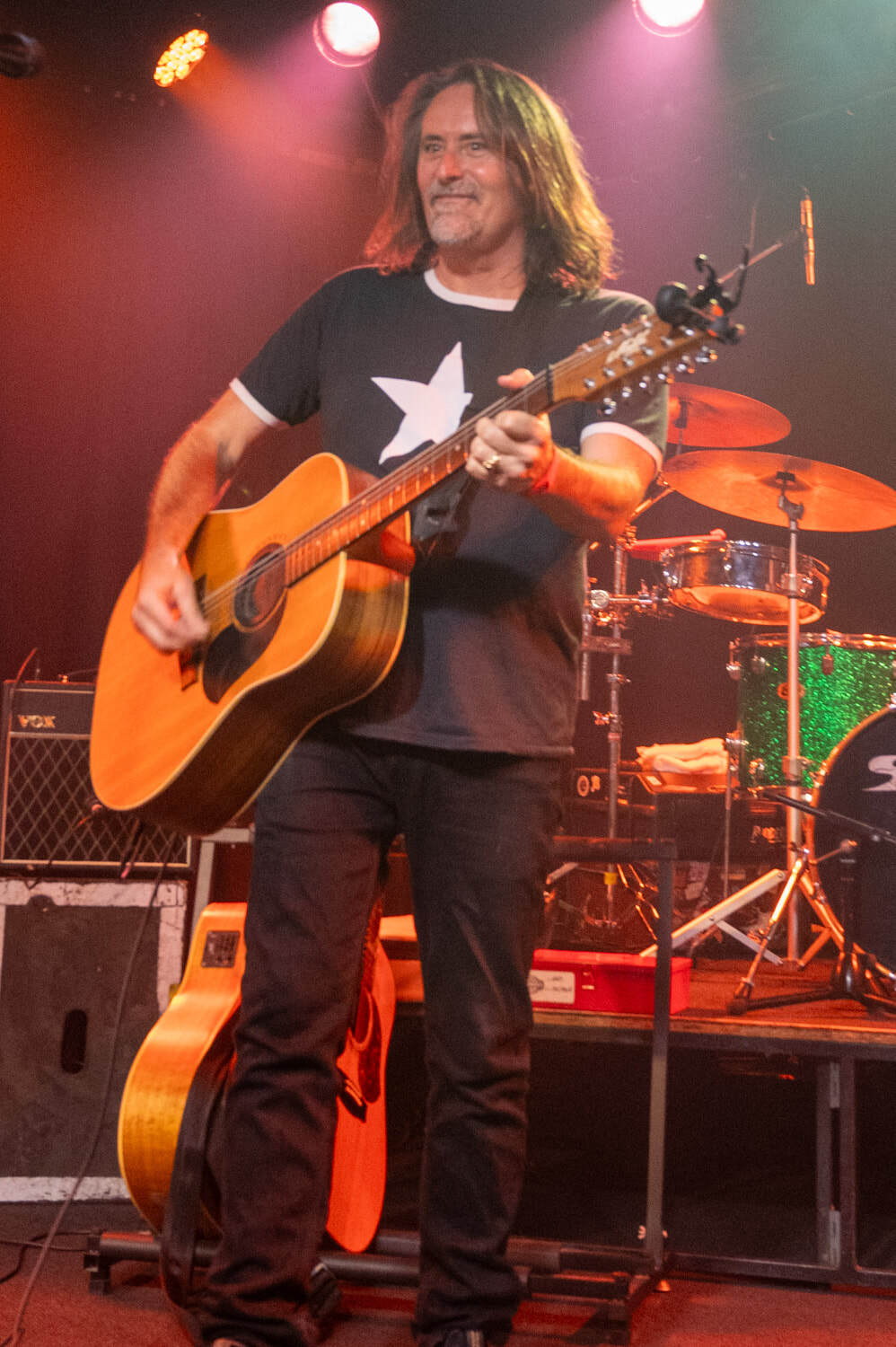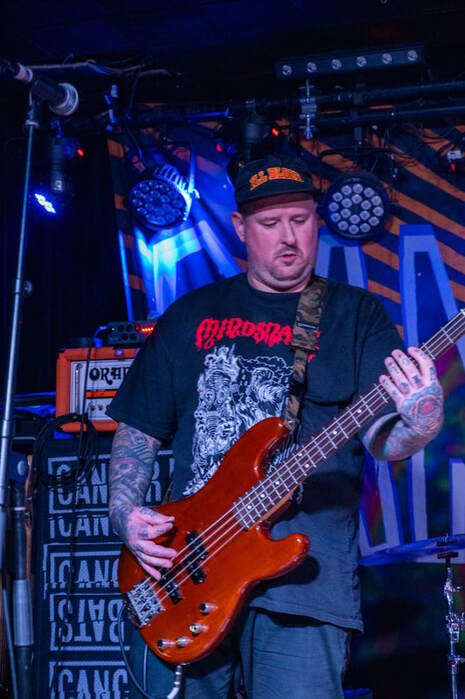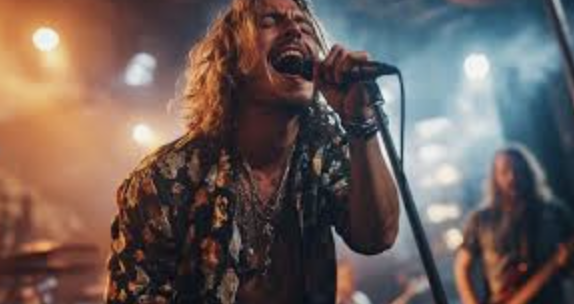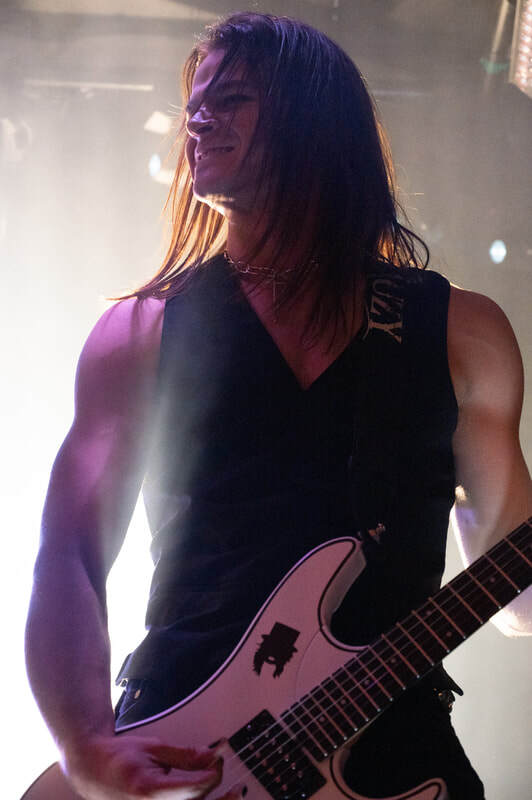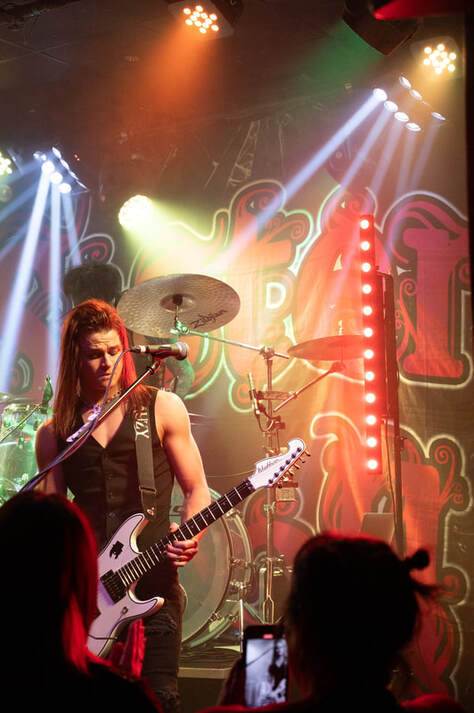- Published on
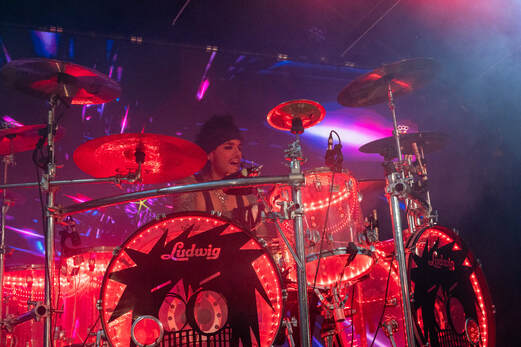
Photographing live music is always an electrifying experience, but there’s something uniquely intense about shooting an album launch. Unlike a regular gig, album launches are a celebration, a culmination of months—sometimes years—of work by the band. The atmosphere is charged with anticipation, the energy palpable, and for a photographer, it presents an incredible opportunity to capture history in the making.
One of the most thrilling albums launches I’ve had the privilege to shoot was Sisters Doll’s ‘Scars’ Album Launch at Max Watts, Melbourne, on January 25th, 2025. This wasn’t just another gig—it was a momentous occasion for the band and their loyal fanbase. The excitement in the air was like a pressure cooker ready to explode, and from the moment I stepped into the venue, I knew this night would be unforgettable.
The Build-Up: A Tension-Filled Atmosphere
Walking into Max Watts that night, the first thing that struck me was the sheer volume of people. Over 700 fans had packed into the venue, each buzzing with excitement, waiting for the moment when Sisters Doll would take the stage. The atmosphere was completely different from a standard gig. There was a shared energy in the crowd, a mix of nerves, joy, and anticipation that made every second leading up to the band’s entrance feel stretched and electrified.
As the night progressed, the crowd became even more restless. The support acts—Wicked Things, Atomic Riot, and Cassidy Paris—each delivered high-energy sets, which only amped up the anticipation further. Their performances set the tone for what was to come, and with each act, the tension in the room grew.
The Photography Pit: Packed and Intense
Just before Sisters Doll was about to hit the stage, I made my way into the photography pit. To my surprise, it was already packed. Unlike some gigs where photographers have space to move freely, this night was different. Every photographer wanted a piece of the action, and it was a challenge to find the right angles and moments to capture without getting in the way of others.
Despite the tight space, the pit was buzzing with excitement. We all knew something big was about to unfold, and the challenge made it even more exhilarating. My camera was ready, my settings adjusted, and my focus locked in on the stage as the lights dimmed.
When the Stage Erupted
The moment Sisters Doll stepped onto the stage; Max Watts exploded. It was as if all the anticipation had finally been released in one massive burst of energy. The pyrotechnics and confetti cannons added to the spectacle, and the band wasted no time launching into their set with raw intensity.
One of the most mind-blowing moments was the 360-degree spinning drum solo by Bryce. Capturing that on camera was a challenge, but the movement, lighting, and sheer excitement made for some of the most dynamic shots I’ve ever taken. The crowd went wild, and as a photographer, it was my job to translate that energy into still images that could tell the story of the night.
The Takeaway: Why Album Launches Are Special
Shooting an album launch isn’t just about taking great photos—it’s about capturing a defining moment in a band’s career. These events are more than just performances; they are milestones, celebrations, and emotional rollercoasters for both the artists and their fans.
Compared to a regular gig, an album launch has a higher level of production, bigger crowds, and a unique emotional weight that makes the night unforgettable. It’s an experience where every shot matters, where every image has the potential to become a piece of the band’s history.
For any live music photographer, being part of an album launch is an unparalleled experience, and if given the chance, it’s one you should never pass up. As for Sisters Doll, their ‘Scars’ Album Launch was a testament to their growth, their connection with their fans, and their undeniable talent as performers. And for me, capturing that night was an absolute privilege.
If you ever get the opportunity to shoot an album launch, embrace it—you won’t regret it!
One of the most thrilling albums launches I’ve had the privilege to shoot was Sisters Doll’s ‘Scars’ Album Launch at Max Watts, Melbourne, on January 25th, 2025. This wasn’t just another gig—it was a momentous occasion for the band and their loyal fanbase. The excitement in the air was like a pressure cooker ready to explode, and from the moment I stepped into the venue, I knew this night would be unforgettable.
The Build-Up: A Tension-Filled Atmosphere
Walking into Max Watts that night, the first thing that struck me was the sheer volume of people. Over 700 fans had packed into the venue, each buzzing with excitement, waiting for the moment when Sisters Doll would take the stage. The atmosphere was completely different from a standard gig. There was a shared energy in the crowd, a mix of nerves, joy, and anticipation that made every second leading up to the band’s entrance feel stretched and electrified.
As the night progressed, the crowd became even more restless. The support acts—Wicked Things, Atomic Riot, and Cassidy Paris—each delivered high-energy sets, which only amped up the anticipation further. Their performances set the tone for what was to come, and with each act, the tension in the room grew.
The Photography Pit: Packed and Intense
Just before Sisters Doll was about to hit the stage, I made my way into the photography pit. To my surprise, it was already packed. Unlike some gigs where photographers have space to move freely, this night was different. Every photographer wanted a piece of the action, and it was a challenge to find the right angles and moments to capture without getting in the way of others.
Despite the tight space, the pit was buzzing with excitement. We all knew something big was about to unfold, and the challenge made it even more exhilarating. My camera was ready, my settings adjusted, and my focus locked in on the stage as the lights dimmed.
When the Stage Erupted
The moment Sisters Doll stepped onto the stage; Max Watts exploded. It was as if all the anticipation had finally been released in one massive burst of energy. The pyrotechnics and confetti cannons added to the spectacle, and the band wasted no time launching into their set with raw intensity.
One of the most mind-blowing moments was the 360-degree spinning drum solo by Bryce. Capturing that on camera was a challenge, but the movement, lighting, and sheer excitement made for some of the most dynamic shots I’ve ever taken. The crowd went wild, and as a photographer, it was my job to translate that energy into still images that could tell the story of the night.
The Takeaway: Why Album Launches Are Special
Shooting an album launch isn’t just about taking great photos—it’s about capturing a defining moment in a band’s career. These events are more than just performances; they are milestones, celebrations, and emotional rollercoasters for both the artists and their fans.
Compared to a regular gig, an album launch has a higher level of production, bigger crowds, and a unique emotional weight that makes the night unforgettable. It’s an experience where every shot matters, where every image has the potential to become a piece of the band’s history.
For any live music photographer, being part of an album launch is an unparalleled experience, and if given the chance, it’s one you should never pass up. As for Sisters Doll, their ‘Scars’ Album Launch was a testament to their growth, their connection with their fans, and their undeniable talent as performers. And for me, capturing that night was an absolute privilege.
If you ever get the opportunity to shoot an album launch, embrace it—you won’t regret it!
